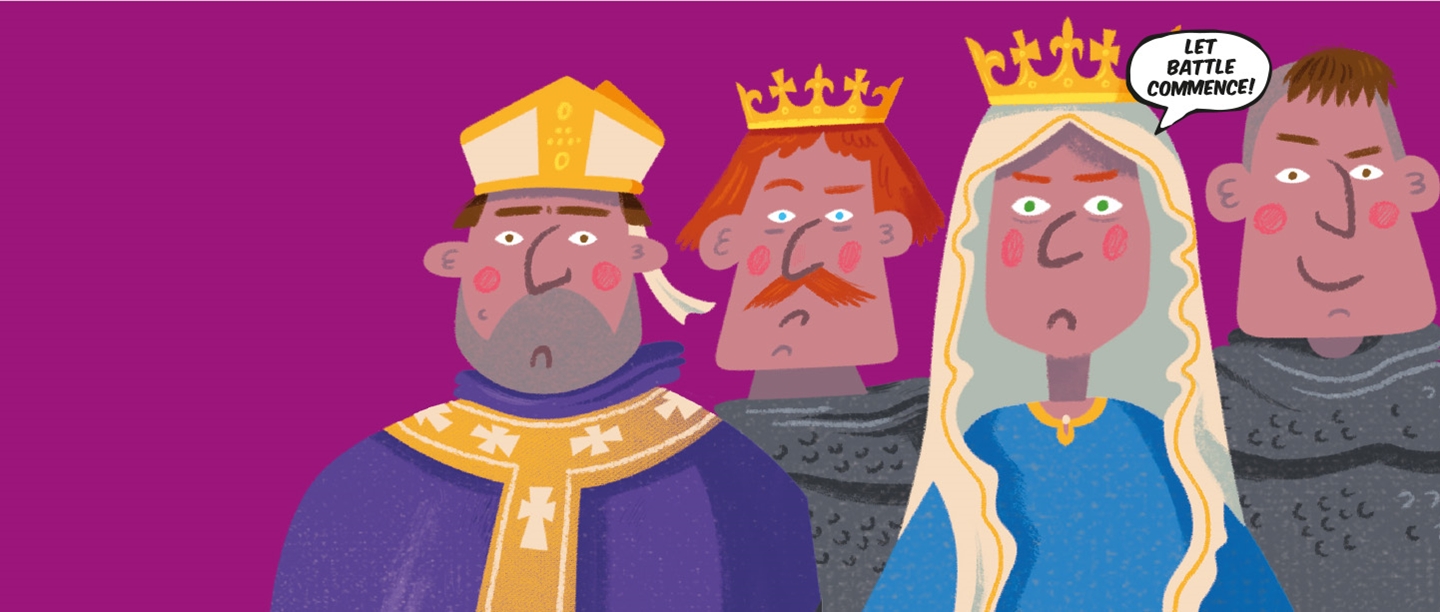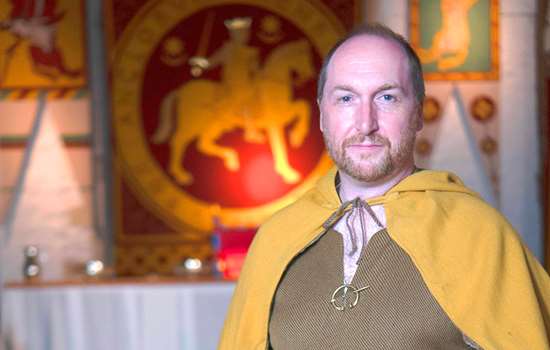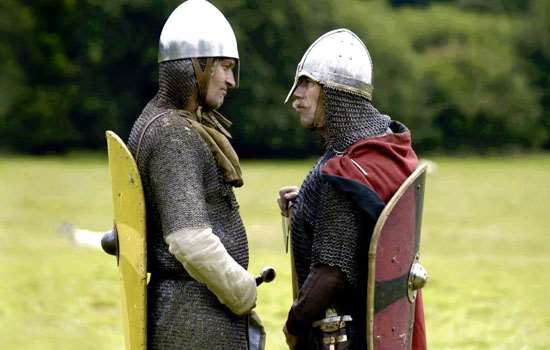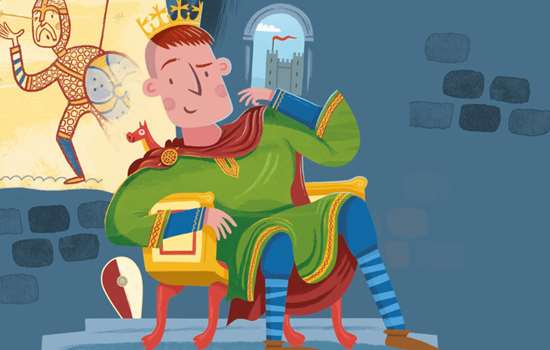The Battle of Hastings
The Battle of Hastings took place on 14 October 1066 and was one of the most important moments in English history. It actually took place about seven miles from Hastings. Today, there is a small town on the site called Battle. The series of events that led up to the battle began on 5 January 1066, with the death of the elderly English king Edward the Confessor. After Edward died, Duke William of Normandy thought he was the rightful king of England.
He crossed the Channel from France with around 7,000 soldiers and invaded England to claim the crown from King Harold, who had become king after Edward the Confessor. When the two armies met, thousands of soldiers were killed but, by the end of the day, William was victorious. He was crowned king of England on Christmas Day 1066. This momentous year marked the end of the Anglo-Saxon period and the beginning of the Norman era, which lasted until 1154.
The Key Players
The two main people involved in the Battle of Hastings were Duke William of Normandy, who later became known as William the Conqueror, and the English king, Harold – who some sources say was killed when he was hit by an arrow in his right eye (pictured). Harold was a powerful earl from a prominent family, the Godwines, while William was descended from Viking raiders and was a cousin of Edward the Confessor.
But the events of 1066 involved lots of other important people too. Harald Hardrada, the king of Norway, invaded England just before the Battle of Hastings. William’s wife Matilda, the Duchess of Normandy, was left in control of Normandy while he was in England. Other relatives and supporters of William were rewarded by him with land in England. After he fought at the Battle of Hastings, one Norman noble, William Fitz Osbern, was given the Isle of Wight!
Download our fun game
You can find out more about some of the key people involved in the Battle of Hastings with our special two-player game of Who’s Who? To download a PDF of the cards and game sheets needed to play the game, just click on the link below.
You’ll also need pens, some thin cardboard (such as the side of a cereal box) to make the game cards, glue and scissors – ask a grown-up to help you with this.
Download the gameHow to play
The aim of the game is to be the first player to identify which historical figure the other player has on their card. Shuffle the cards and lay them face down. Each of the two players chooses a card, making sure the other player doesn’t see it. The youngest player goes first. When it’s your turn, you can either ask a question about their appearance or guess who your opponent has on their card. Questions can only be answered with either a ‘yes’ or a ‘no’. So you could ask a question such as, ‘Do they have a beard?’ or, ‘Are they wearing a crown?’
After each question, you can cross off the characters on your game sheet that don’t match the description. When you think you know who your opponent has on their card, you can use your turn to make a guess. If your guess is correct, you win the game. But if your guess is wrong, you automatically lose, so don’t guess until you’re ready! To make the game last longer, you could play a series of games until one player has won a total of five.




